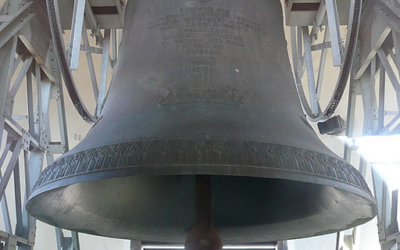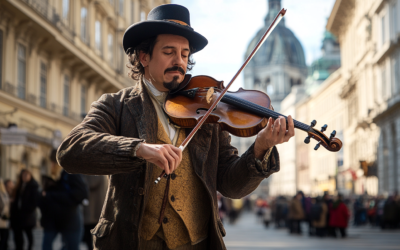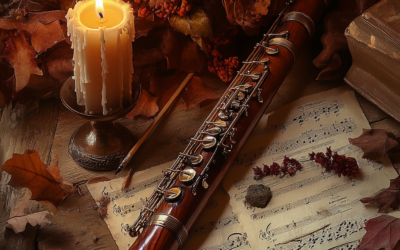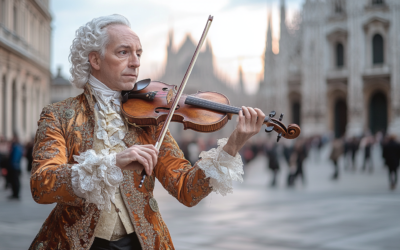Mozart’s Violin Pieces
Substitutes for Failed Movements?
Three violin compositions by Mozart—K.261 Adagio in E major, K.269 Rondo in B-flat major, and K.373 Rondo in C major—were designed to replace movements deemed unsuccessful in his violin concertos K.207 and K.219.
Scholars suggest that K.261 was written in 1776 to replace the second movement of K.219, K.269 between 1775 and 1777 to substitute the finale of K.207, and K.373 in 1781. Yet, despite these revisions, the overall quality of the original concertos remains unchanged.
The intriguing part is that Mozart himself dedicated more attention in his correspondence to these minor works than to his larger violin concertos.
Could this be a sign of the less-than-ideal success of these works? Or was Mozart simply grasping at straws to salvage unsatisfactory movements?
Mozart: The Fall of the Gods
This book compiles the results of our studies on 18th-century music and Mozart, who has been revered for over two centuries as a deity. We dismantle the baseless cult of Mozart and strip away the clichés that falsely present him as a natural genius, revealing the contradictions in conventional biographies. In this work, divided into two parts, we identify and critically analyze several contradictory points in the vast Mozart bibliography. Each of the nearly 2,000 citations is meticulously sourced, allowing readers to verify the findings. This critical biography of Mozart emerges from these premises, addressing the numerous doubts raised by researchers.
"Mozart focused more on these trivial violin replacements in his letters than on the grand violin concertos themselves—a sign, perhaps, of his own recognition of their failings."
Mozart: The Fall of the Gods
Substitutes for Failed Movements?
Three of Mozart’s lesser-known violin compositions—K.261, K.269, and K.373—were never intended to stand on their own. Instead, they were written as replacements for movements in his earlier violin concertos that were, by all accounts, unsatisfactory. The Adagio K.261, composed in 1776, was meant to replace the second movement of the Violin Concerto K.219. The Rondo K.269, composed between 1775 and 1777, was designed to substitute the finale of K.207. Finally, K.373, composed much later in 1781, presents another curious case of substitution, though this time for an unknown purpose. The obvious question is: Why did Mozart feel compelled to rewrite these sections?
Dull Replacements, Questionable Quality
Despite these revisions, the new versions of the movements—K.261 and K.269—add nothing of substance to the overall quality of the violin concertos. The K.373, likewise, does little to improve on the originals. These works stand as testimony to Mozart’s creative struggle in the realm of violin music. What is particularly telling is that the only definitive evidence of Mozart’s authorship for these replacement movements comes from his own letters. It is odd, perhaps even suspicious, that the composer focuses on these minor works in his correspondence, while never once discussing his larger violin concertos. Was he, perhaps, aware of their limitations?
The Italian Connection
The Rondo K.373 was allegedly composed for the Italian violinist Antonio Brunetti, who was reportedly dissatisfied with the original movements. However, Brunetti was not only a violinist but also a composer in his own right. It is puzzling why he would need Mozart’s assistance to ‘fix’ movements he didn’t like. Adding to the strangeness is the fact that Mozart and Brunetti were not on good terms, making it even more perplexing why Mozart would have bothered to compose this replacement six years after the original concerto was written.
The “Concertone” Enigma
Another curious entry in Mozart’s violin output is the Concertone, composed in May 1774. Although it precedes his five violin concertos by only a year, its style is noticeably more archaic, presenting a stark contrast to the later works. The Concertone includes Baroque-like echoes of Vivaldi, particularly in its first movement, as well as an overly long and rather tedious Andantino. This piece may have been one of the reasons for Mozart’s struggles to secure employment during his travels to Mannheim, Munich, and Paris. Indeed, compared to the works of contemporaries such as Saint-George, the Concertone feels antiquated and out of place.
You May Also Like
The Echo of the Pummerin Bell
The powerful resonance of the Pummerin bell in Vienna may have influenced Mozart’s compositions, particularly Sarastro’s arias in The Magic Flute.
The Hidden Influence of Joseph Boulogne, Chevalier de Saint-George
Joseph Boulogne, known as the “Black Mozart”, was shaping the future of music while Mozart was still struggling for recognition in Paris. But history has buried the significant influence Saint-George had on Mozart’s career, erasing his pioneering style from the narrative.
The Forgotten Viennese Quartets
Attributing Offertorium K.34 to Mozart is not just misleading, it reflects the careless methods used by 19th-century scholars to inflate his legacy. Without an autograph or solid evidence, this work should not be considered part of his output.”
Mozart’s Bassoon Concerto: A Question of Authorship
The Bassoon Concerto K.191 raises more questions than it answers. Long thought to have been composed for a Munich bassoonist, new evidence suggests Mozart had no clear performer in mind. The concerto’s disjointed movements and other dubious compositions attributed to Mozart add further complexity to his legacy
The Uncertain Origins of Mozart’s Early String Quartets
Mozart’s so-called “Milanese Quartets” (K.155, 158, and 159) have long been subject to debate, primarily due to their ambiguous instrumentation and structural weaknesses. Were these works part of a larger series of orchestral divertimenti, hastily repurposed as string quartets? The answer remains elusive, reflecting the young composer’s struggles to find his own voice.
Simplicity, Errors, and the Myth of Perfection
Mozart’s canons are not as complex as often claimed, with notable errors in K.553 and K.554, and the myth of “V’amo di cuore teneramente” K.348 being debunked.







